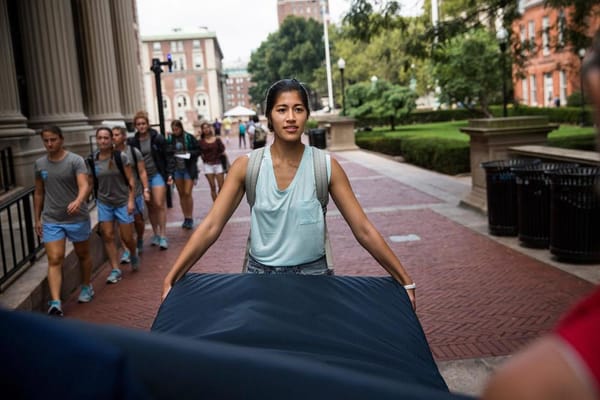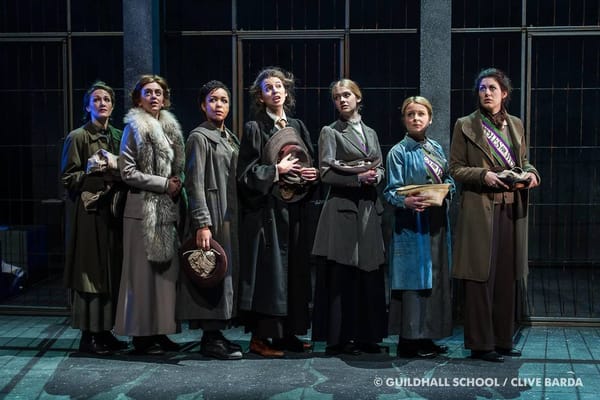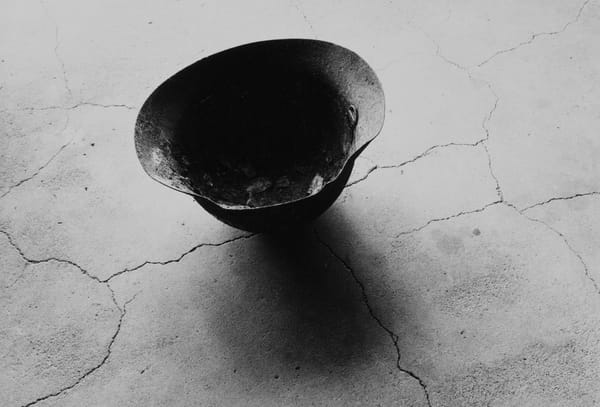Life, Death, and Dance in 1930s Soviet Russia
Fred Fyles is impressed by GRAD's exploration of USSR ballet The Bolt
The ballet can be boring. There. I’ve said it. As Arts Editor, you would think it antithetical that I could find dance deathly dull, but in all honesty I can’t tell my plié from my pointe, and have held a deep dislike of the art ever since being forced by my parents to attend ballet lessons in my childhood (I protested; they switched me to piano; everyone was happy). So when attending the Gallery of Russian Art and Design, whose newest exhibition is centred around a Shostakovich ballet entitled The Bolt, I encountered one of those all-too-frequent moments that made me think: “well, perhaps I should have been born in early 20th century Russia”
If I had been born in, say, 1911, then (presuming I survived WWI, the Russian Revolution, and the ensuing Civil War) instead of being sick to death of Swan Lake, I could be sitting in the front row of The Bolt, a work that seems miles away from anything I have ever seen. For a start, The Bolt is fun. Choreographed by Fyodor Lopukhov, who worked at the Bolshoi Ballet, dancers in The Bolt took on machinistic characteristics, using their arms and legs to recreate the thunking and clunking of heavy machinery in an acrobatic celebration of the marvels of modern technology. Lopukhov was a dynamic choreographer, who was focussed on uniting the worlds of classical ballet and technical dance; a resolute modernist, his work has been reappraised as quietly influential on a whole host of 20th century choreographers.
The plot of The Bolt – which would prove to be its eventual downfall – is relatively simple: Lenka Gulba, which translates literally as Lazy Idler, is a rube, whose only wish is to get plastered with his gang of misfits; determined to continue drinking, they plan to disrupt the factory’s new machine, convincing patsy Goshka to drop a large bolt in the engine; luckily shortly after enacting their plan the gang is caught, with help from Komsomol, the young communists’ league. Interspersed with variety performances from the local factory workers, the plot allowed for a cast of archetypical characters such as ‘The Petit-Bourgeois’, ‘The Job-Hopper’, and ‘The Counter-Revolutionary’.
These characters were skilfully brought to life by Tatiana Bruni, whose bright, bold costume designs form the majority of the exhibition. A child of an artistic family, Bruni grew up straddling two worlds: although born in a pre-revolution Russia, she graduated from art school in the blinding light of the new Soviet Union, with a government that promised equality, justice, and a dictatorship of the proletariat. This optimism is reflected in her designs, which are like constructivist marvels transformed into children’s book characters; the gouache drawings still look as fresh as the day they were made, and we have a number of meticulously preserved costumes used in the original show for reference.
Unfortunately, the ballet fell foul of the censors; following its premiere in 1931, critics panned the production, and it was not to be performed again for another 74 years. At the time Shostakovich was the golden child of Soviet music, but this would not be the first time his work was suppressed: his next ballet, which also happened to be his last, was closed after a negative review in Soviet mouthpiece Pravda – entitled The Bright Stream, it followed The Bolt in his triptych of contemporary Soviet life, and revolved around life on a collectivist farm.
Ultimately, the reason for the downfall of the ballet was its satirical elements, which had no place in the USSR of the 1930s, which was increasingly moving towards Socialist Realism as a preferred method of artistic output. Although the ballet included all the usual pro-communist, anti-religion messages, the characters were deemed to be farcical, and therefore damaging to the Soviet status-quo. Not only that, but Shostakovich included snippets of jazz and foxtrot into his score, infuriating critic who saw such styles as ‘Western imperialism’, and Lopukhov was accused of a ‘dancification’ of industrial progress – a serious error in the eyes of governmental censors.
And thus _The Bolt _was consigned to history. While there have been a couple of revivals since the fall of the USSR, very little interest has been generated since; hopefully, with the opening of GRAD’s exhibition, we will see a renewed interest in this ballet. The rare opportunity to see Bruni’s designs in the flesh is marvellous, since they can be described as nothing less than breathtaking. With their lyrical use of colour, geometric precision, and wonderful witticism, they should rank in the highest echelons of Constructivist art; Bruni deserves to have a place in Russian art history alongside luminaries such as Alexander Rodchenko, Varvara Stepanova, and Lyubov Popova.
The costume designs, alongside GRAD’s informative supplementary information – usefully provided on iPads – allow us a glimpse at how artistic institutions operated within the governmental superstructure that was the USSR. We learn that the industrial sabotage that drives the libretto is no mere plot device, but an actual fear for many Soviets, in no small part thanks to the 1930 Industrial Party Trial, during which a group of ministers were accused of plotting a coup. Bruni’s leaning towards simple, childish designs is perhaps explained by a quote from Antonii Lunacharsky, Commissar for Education, who saw the arts as a perfect means for education a largely illiterate population: “Agitation and propaganda acquire particular acuity and effectiveness when they are clothed in the attractive and mighty form of art”.
Thus ‘The Job-Hopper’ has a pair of wings emerging from his derrière, ‘The American Navy’ character is smoking a nuclear-missile cigar, and ‘The Bureaucrat’ has been transformed into a literal bureau, a pair of stacked-paper legs bulging out from a wooden desk. Her design for ‘The Terrorist’ is particularly enlightening; the worst fears of the Soviet Union are given human form as a thin woman wearing a voguish hat and a sumptuous ballgown. Run for your lives, the bourgeois are here!
GRAD have managed to not just present a fine collection of art, but – through archive photographs, costume reproductions, and Shostakovich piped through the gallery’s speaker system – have managed a near-impossible feat of bringing a ballet to life. If it only gave exposure to Bruni’s work, that would have been enough, but GRAD goes above and beyond, giving us an idea of what life was like in the USSR, not only for those in the artistic world, but the general population too. So next time you’re pining for a return to the values of the USSR of the 1930s, instead of calling everyone Comrade and contracting TB, just pop down to Great Titchfield Street instead, and experience this modern marvel of ballet.










